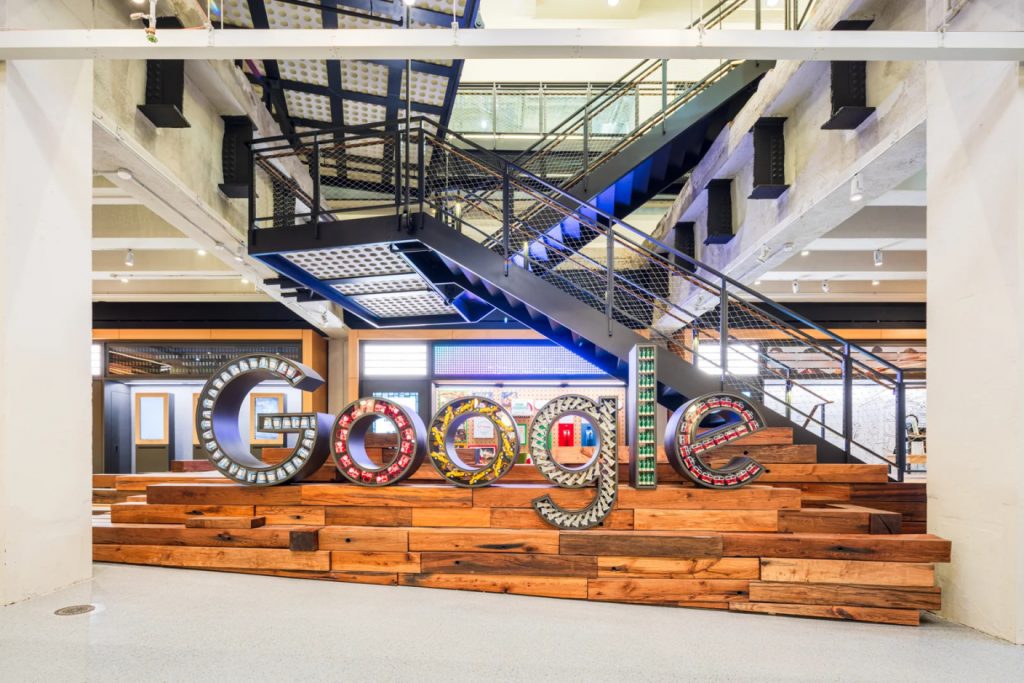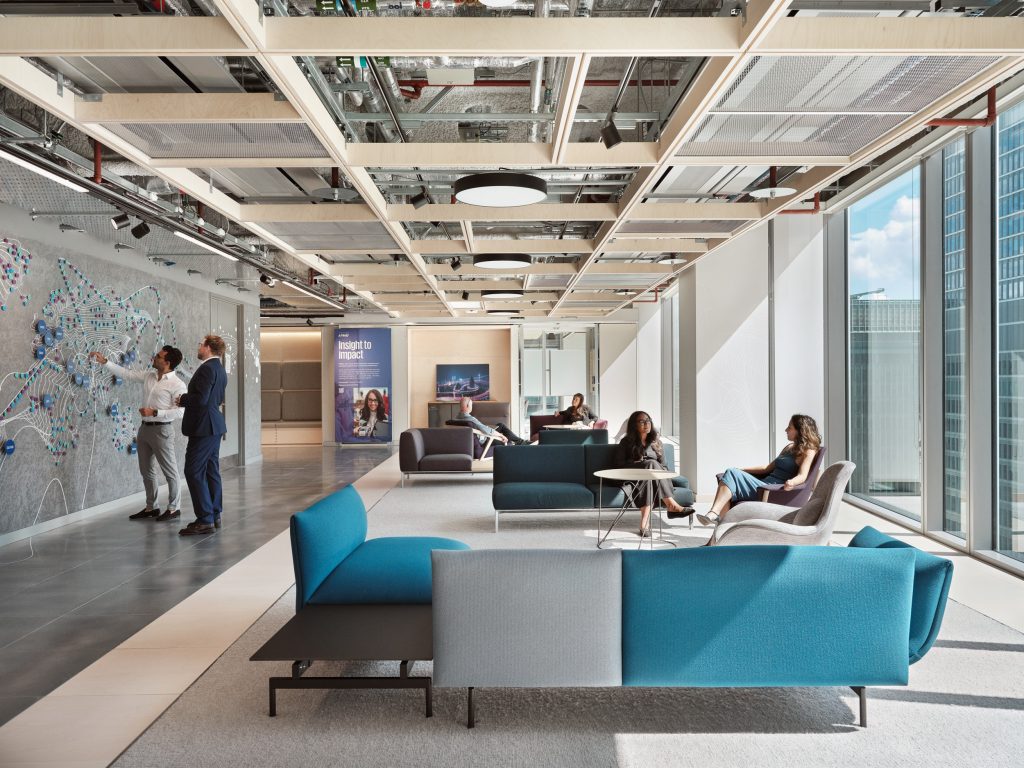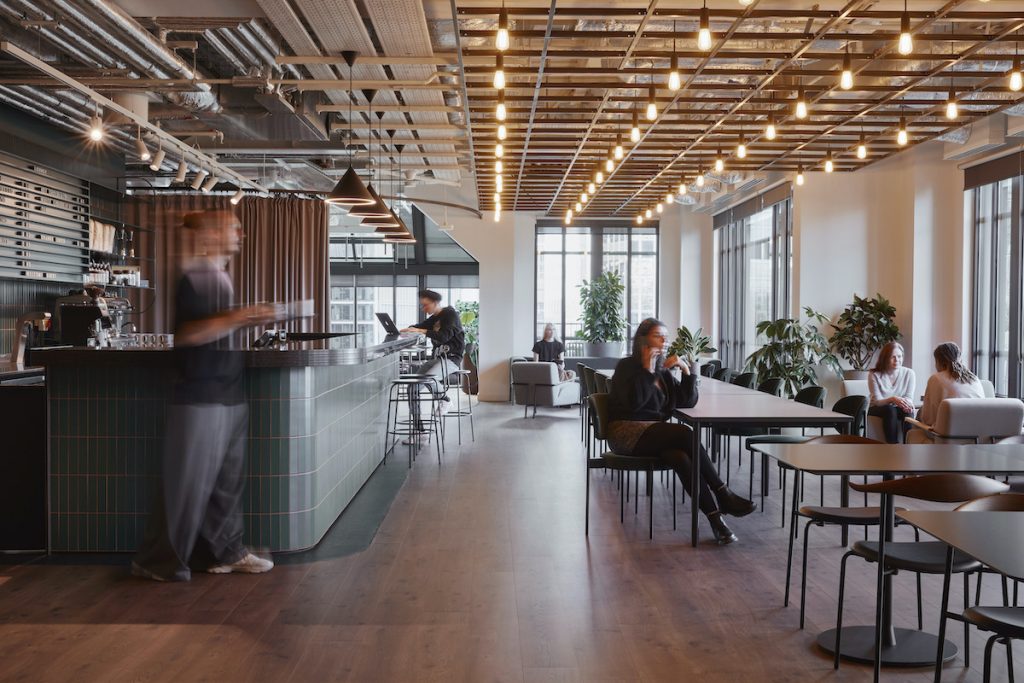Downstream’s David Waingarten discusses three key takeaways the built environment can learn from event experiences, like a Taylor Swift or U2 concert.
The experience economy is transforming how people dream, share and spend. From revenge travel to pop stars changing the GDP of entire countries, people everywhere are demonstrating that they value experiences over things. Industries aren’t just taking note, they’re rapidly adapting and evolving to catch the wave.
Across sectors and spaces, we see more and more experiential cross-pollination—design that purposefully blends the types of experiences you’d expect from one category or place into another.
Sports stadiums are following hotel and airline trends by removing more general fan seating to build luxury suites and club houses that offer fans “a better game experience.” Rock concerts like U2’s residency at The Sphere and Taylor Swift’s Eras Tour are matching well-trod pop catalogs with never-before-seen spectacle—highly immersive digital storytelling that makes every fan feel like they have a front-row seat to a life-changing experience.

Cars are looking more and more like smartphones, leveraging our increasing dependence and expectation that all digital interfaces feel like the ones we carry around with us all day. Hotels and corporate real estate are incorporating more interactive and digital art installations, making lobbies feel more like art galleries.
These examples aren’t just smart design or business trends. They are proof of a fundamental truth extant in all of nature—the principles of evolution writ large in travel, retail, sports, entertainment, and our built environments.
In a reality that is constantly changing, the life forms that survive and thrive best are those that mimic, borrow from, and adapt in direct relationship with their environments. In the experience economy, this means more and more places, products, and moments that feel like “mash-ups.”
So, how can the modern workplace evolve? What can workplace design learn from the experience economy and the increasing influence it’s having on the design of spaces, goods, and services all around us? Here are a few thoughts:
#1: Emotional Connection Over Tech
Very few people have a deep understanding of how the technology of The Sphere in Las Vegas actually works, but everyone you speak with who’s seen a show there can tell you how it feels. Workplace design too often myopically focuses on infrastructure and tech as solutions to core human needs. Workplaces are containers for rich, emotional and often communal experiences. If we want to design spaces people want to be in, we need their emotional and professional needs to drive the creative brief, not audiovisual diagrams and screen specs.

#2: Know Your Purpose and Invite People Into It
Post-pandemic workplaces need more than a facelift; they need a purpose. Experiential design helps us not only reveal and amplify a business’ core purpose, but also design the conditions, places, moments, and mechanisms for humans to connect more deeply with that purpose and with each other. Great storytelling works because it doesn’t pacify and alienate us, but invites us to become part of something bigger. When we design from core story and purpose, we issue that invitation and start to meet a core human need: belonging. Taylor Swift’s fans aren’t just buying a ticket to a concert—they’re becoming part of a global community. And that’s worth way more than the price of admission.
#3: Emulate “Third Places”
Parks, bars, coffee shops, squares, piazzas, libraries, museums, barbershops, front porches and stoops. These are some of the places we go to feel the energy and buzz of our surroundings, serendipitously meet new folks, learn and become inspired by chance encounters, or reconnect regularly with people and places outside home and work. Many large companies are taking cues from these spaces to design workplaces that bring people together more casually and blur the line between the outside and the inside.
In the same way biophilic design seeks to meet our need to be close to nature within the built environment, the emulation of third spaces seeks to enrich workplaces with the same social dynamics we find in the outside world—places where curiosity and discovery co-mingle with the ability to be by yourself while still feeling “part of.”
One client of ours took a small, enclosed back-of-house space that had no obvious use and turned it into a speakeasy. Needless to say, every employee and visitor wants to spend time there.

As we consider these ideas and other ways workplace design can adapt and evolve, here’s a simple thought exercise that may be useful:
What’s your… ____________ + ____________?
Ask yourself what two forces, ideas, or philosophies you’re intentionally mixing together right now. Office + Coffee Shop? Conference Room + Laboratory? While not every combination is magical, the act of bringing seemingly unrelated ideas together can open your imagination, change the conversation, generate new connections, and ultimately lead to unexpected possibilities.
All images courtesy of Downstream.
Want to learn more about third places and the workplace? Check out:
How Third Places Are Shaping Workplace Design


